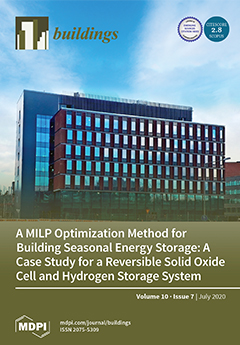Indoor air quality and thermal conditions are important considerations when designing indoor spaces to ensure occupant health, satisfaction, and productivity. Carbon dioxide (CO
2) concentration and indoor air temperature are two measurable parameters to assess air quality and thermal conditions within a
[...] Read more.
Indoor air quality and thermal conditions are important considerations when designing indoor spaces to ensure occupant health, satisfaction, and productivity. Carbon dioxide (CO
2) concentration and indoor air temperature are two measurable parameters to assess air quality and thermal conditions within a space. Occupants are progressively affected by the indoor environment as the time spent indoors prolongs. Specifically, there is an interest in carrying out investigations on the indoor environment through surveying existing Heating, Ventilation, Air Conditioning (HVAC) system operations in classrooms. Indoor air temperature and CO
2 concentration in multiple lecture halls in Toronto, Canada were monitored; observations consistently show high indoor air temperature (overheating) and high CO
2 concentration. One classroom is chosen as a representative case study for this paper. The results verify a strong correlation between the number of occupants and the increase in air temperature and CO
2 concentration. Building Energy Simulation (BES) is used to investigate the causes of discomfort in the classroom, and to identify methods for regulating the temperature and CO
2 concentration. This paper proposes retro-commissioning strategies that could be implemented in institutional buildings; specifically, the increase of outdoor airflow rate and the addition of occupancy-based pre-active HVAC system control. The proposed retrofit cases reduce the measured overheating in the classrooms by 2-3 °C (indoor temperature should be below 23 °C) and maintain CO
2 concentration under 900 ppm (the CO
2 threshold is 1000 ppm), showing promising improvements to a classroom’s thermal condition and indoor air quality.
Full article





